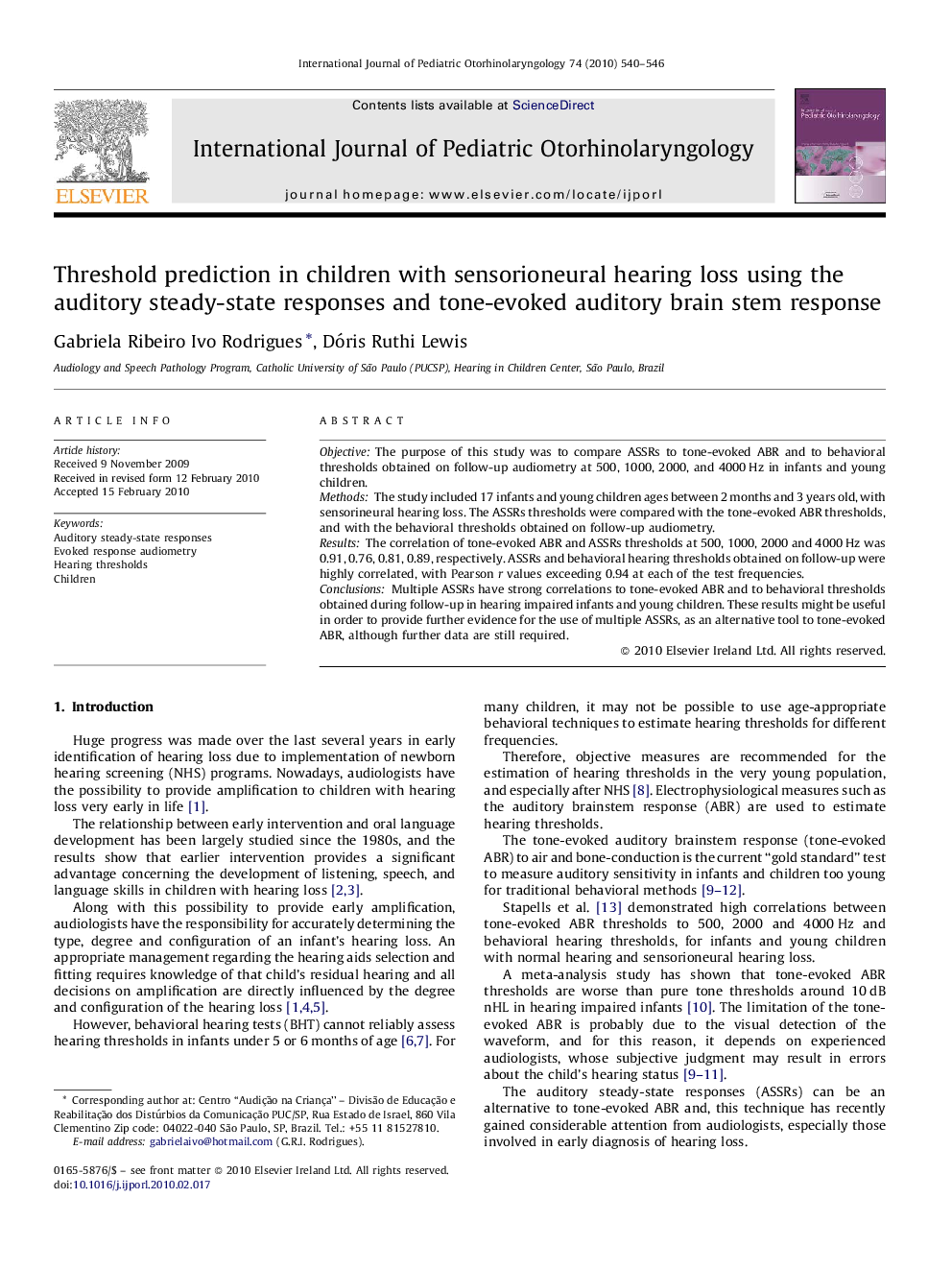| Article ID | Journal | Published Year | Pages | File Type |
|---|---|---|---|---|
| 4114244 | International Journal of Pediatric Otorhinolaryngology | 2010 | 7 Pages |
ObjectiveThe purpose of this study was to compare ASSRs to tone-evoked ABR and to behavioral thresholds obtained on follow-up audiometry at 500, 1000, 2000, and 4000 Hz in infants and young children.MethodsThe study included 17 infants and young children ages between 2 months and 3 years old, with sensorineural hearing loss. The ASSRs thresholds were compared with the tone-evoked ABR thresholds, and with the behavioral thresholds obtained on follow-up audiometry.ResultsThe correlation of tone-evoked ABR and ASSRs thresholds at 500, 1000, 2000 and 4000 Hz was 0.91, 0.76, 0.81, 0.89, respectively. ASSRs and behavioral hearing thresholds obtained on follow-up were highly correlated, with Pearson r values exceeding 0.94 at each of the test frequencies.ConclusionsMultiple ASSRs have strong correlations to tone-evoked ABR and to behavioral thresholds obtained during follow-up in hearing impaired infants and young children. These results might be useful in order to provide further evidence for the use of multiple ASSRs, as an alternative tool to tone-evoked ABR, although further data are still required.
